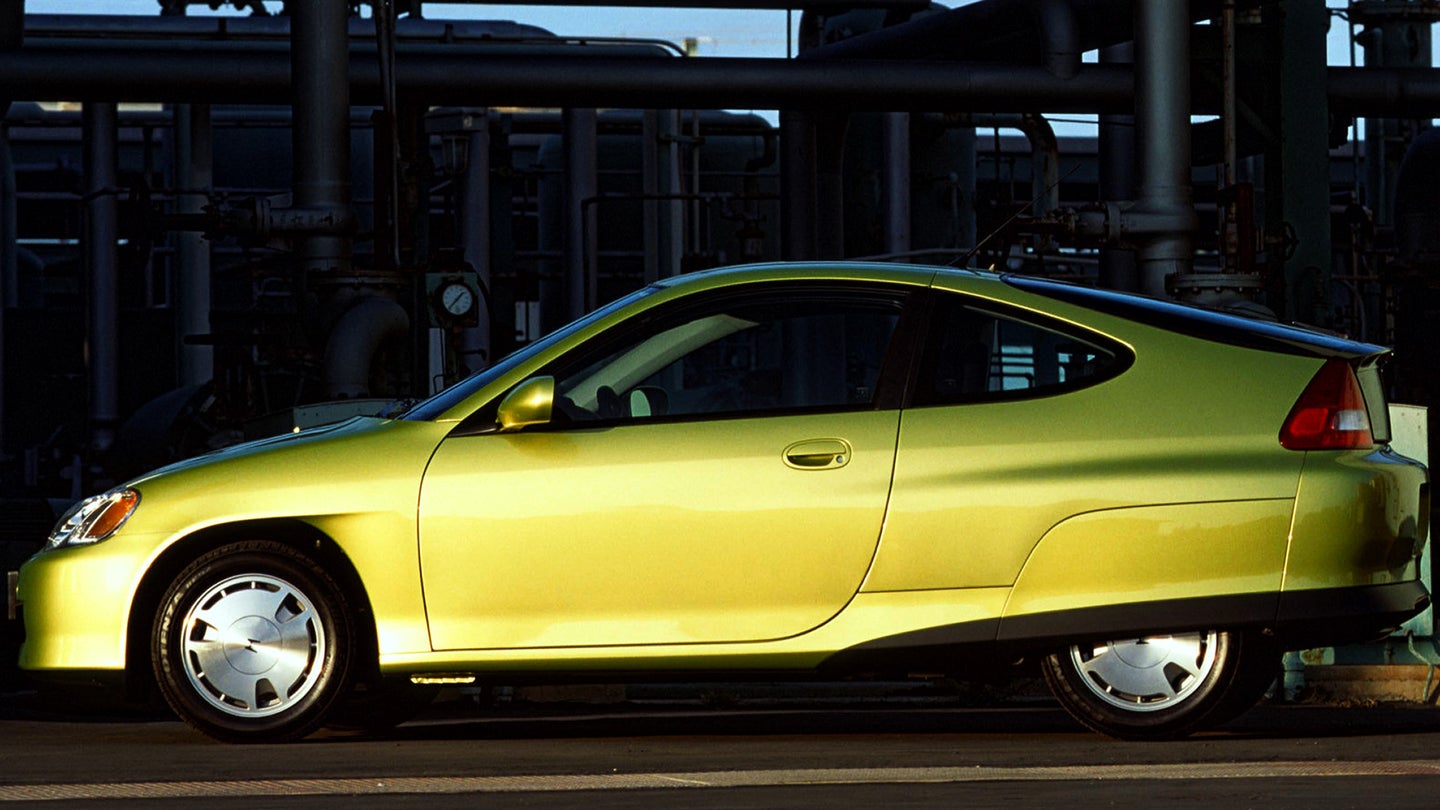First-Generation Honda Insight: the Fine Print
One of the most efficient cars ever had its share of real-world issues.

Earlier this April, Matt Farah did a One Take video with a viewer's Honda Insight, and now there has been a splash of people asking about the car. In 2000, Honda released one of their most innovative vehicles ever produced and carried the crown for most fuel efficient vehicle on the road for roughly seven years. If someone opted for the manual transmission version it came with big advantages, because the motor incorporated lean burn with high efficiency catalyst that could cycle lean-to-rich to purge NOX emissions. At roughly 1,900 pounds, this was one of the first and last affordable vehicles with an all-aluminum chassis. The Insight produced in the same factory as the S2000 and NSX, though the result was function over form, with a highly aerodynamic shape, skinny 165 series tires, and a fuel efficiency when everything was working properly that could easily hit 65 to 70 mpg on the highway.
Testing Direzzas
, Extra Grip More Fun Less MPG, SavageGeeseBut the vehicle died a slow death, and Honda was said to have sold them at a loss. During the Insight's lifecycle the SUV boom started and fuel prices were so low that most buyers laughed at the idea of its (for the time) hyper-efficiency. This year has seen a renewed interest in vehicles of this era thanks to Youtube's thriving car reviews. Unlike many used cars, the Insight had its share of issues that buyers need to be aware of.
TIPS FROM A PREVIOUS OWNER:
- Lean burn system was capable of running 20:1 AFR which ate the primary cats every 100k miles.
- Learn burn system created massive carbon issues with EGR plate and EGR valve requiring frequent maintenance 20-30k miles.
- Lean burn system required LAF/Wideband O2 sensor which is much more expensive and usually fails at 60k miles.
- Battery packs are archaic and often go out of balance which creates constant force charging zapping valuable HP from motor.
- With age all replacement packs are refurbs or rebalanced for long-term ownership, grid chargers are required to keep packs healthy.
- Failing battery packs will often cause horrible performance issues including no start conditions when BCM is confused.
- Fuel system maintenance is critical due to injectors stratified injection strategy which includes indexed plugs from factory.
- CVT vehicles did not have lean burn motors but CVTs are known for failures around 100k depending on driving habits.
- Manual transmissions are delicate
- Tire choice, is limited.
- Even with snow tires vehicle is very unstable in deeper snow.
- 12v battery required and needs to be in good health to avoid odd IMA performance.
- Vehicle has traditional starter which only activates in extreme cold and needs to be monitored or no start conditions occur.
SOC Issues
, SOC Not Accurate, SavageGeese